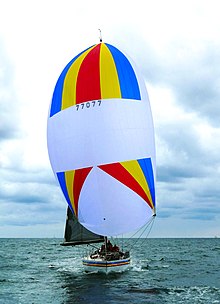Yep, jib is a generic name. The other names have morphed over the years. I like to think of the clew as the overlap point. The clew of a working jib will never overlap the mast. For example, on the J-24 that I sailed on, sail bags were stenciled with percentages. 80%; 90%; 100%; 150%. 100% meant that it met the mast, but did not overlap the mast. You chose a smaller worker if the winds were up. Racing boats give jibs numbers, but I thought it was a neat idea to show the percentages on the sail bags.
The storm jib (sometimes called a "spitfire") also has a clew that will not overlap the mast. It's just shorter on the luff and has a higher clew for better under-the-foot visibility and to prevent boarding seas from pounding the sail. Sails that overlap the mast might be called lapper (or mule), Genoa or some such. When I was taking sailmaking courses back in the 70's from Jim Grant at Sailrite, we had to design (by hand back then), working jib, storm jib, lapper, Genoa, and staysail in one part of the course. We had to build one of those. I chose to build a lapper that I had designed for my Cape Dory 27. If I recall, it was about 123% and I made the luff just a bit shorter than full hoist and the clew a bit higher (I singlehanded, so visibility was super important). Quite powerful and easy to handle.






